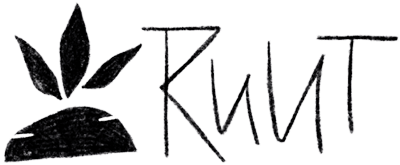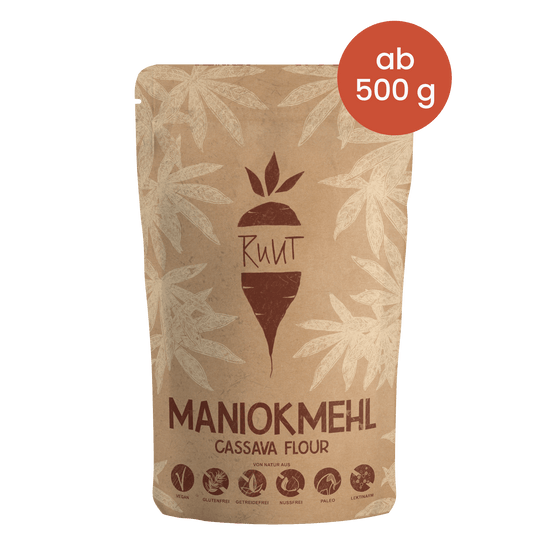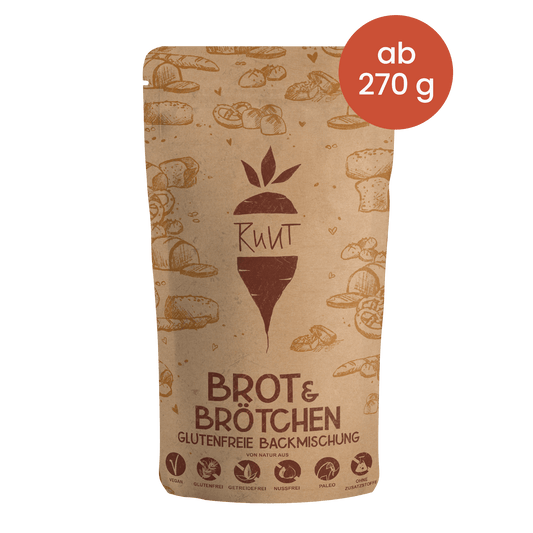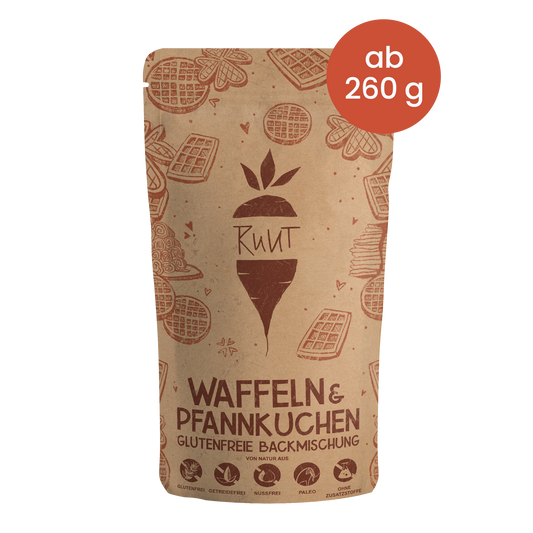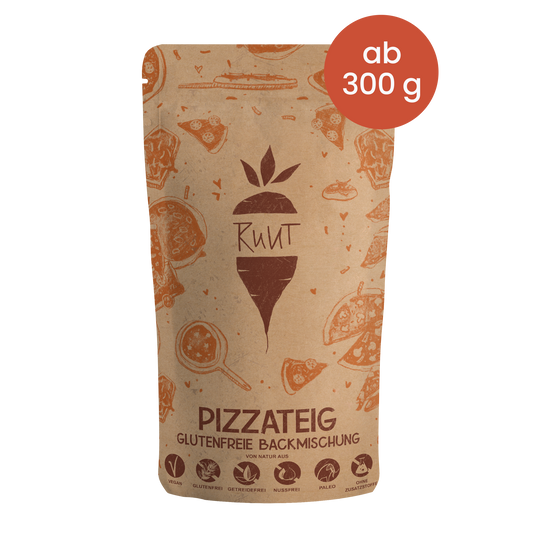Ever heard of cassava flour? Four facts why Ruut® cassava flour is an ideal gluten-free alternative to conventional flour.
About one percent of the German population suffers from celiac disease; i.e. gluten intolerance. For those affected, this often means a drastic change and restrictions in terms of the diet. Baked goods, pasta, sauces - many products contain more or less obviously allergy-causing gluten and can therefore no longer be consumed without problems. Although the market for alternative foods for the affected group is constantly growing, if you take a look at the ingredient lists of conventional alternative products, they are teeming with additives and ingredients that make you think you are holding a drug leaflet in your hands. In addition, for many, the taste and consistency are often miles behind the products they are used to.
But for all those who are desperate, there could be a simple solution: cassava flour!
But what makes cassava flour the perfect wheat flour alternative, not just for people with gluten intolerance? In this blog we devote ourselves to four facts about the carbohydrate-rich root tuber.
1. Cassava Flour is gluten, grain and nut free
A staple food for millions of people in the tropical regions of South America, Africa and Asia, the cassava root, also known as yuca or cassava, is widespread and extremely popular. Not without reason, because the starchy and carbohydrate-rich tuber has, for example, twice as many calories and carbohydrates per 100 grams as sweet potatoes and thus enables a simple, high-energy diet. Cassava is a root tuber, similar to yam, taro or potato, and not a grain. Cassava flour is therefore absolutely free of grain, nuts and gluten and is therefore ideal for allergy sufferers. Since cassava is not considered a cultivated plant, the tuber is also a welcome source of carbohydrates for people on a Paleo diet. With the proportion of resistant starch, cassava also contributes to a healthy intestinal flora. Cassava flour is still purely vegetable and therefore vegan and known as a hypoallergenic source of carbohydrates. It is suitable for autoimmune nutrition as well as for a low-FODMAP diet. In short: Thanks to its properties, cassava flour is a real superfood!
However, if you want to include cassava flour in your diet every day or at least regularly, you should be aware of the high energy turnover and carbohydrate content of the plant.
2. Manioc flour is versatile and has excellent baking properties
You want to bake grain-free, but the dough doesn't rise properly with the selected flour alternative? The consistency is sticky or the baked goods dry out quickly? Do you have to mix different flours in exactly the right proportions to get a reasonably stable baking result? If these issues sound familiar, you've probably already explored the joys of gluten-free and grain-free baking . Because it is often not that easy to replace the properties of gluten.
Ruut cassava flour is the perfect solution for anyone who is now beginning to despair and finally wants to eat sensible bread and rolls again! Due to its high proportion of natural starch, cassava flour has good binding properties - and all without gluten. In contrast to other flour alternatives, such as coconut or almond flour, cassava flour also has a mild taste and a fine, powdery texture. It can also replace wheat flour in a 1:1 ratio for some recipes. You can find out more about this and other gluten-free flours in our article .
For you, this means: finally having fun baking again. Whether bread, rolls, pizza crust, cake, biscuits or yeast dough - Ruut cassava flour is your versatile gluten-free flour alternative!
3. Ruut cassava flour is non-toxic, free of additives and preservatives
Maybe you've heard somewhere that cassava roots contain toxic hydrocyanic acid and are now unsure whether cassava flour is harmful to you? But we can reassure you very quickly here: All approved foods made from cassava are harmless. Of course, this also applies to our original Ruut cassava flour .
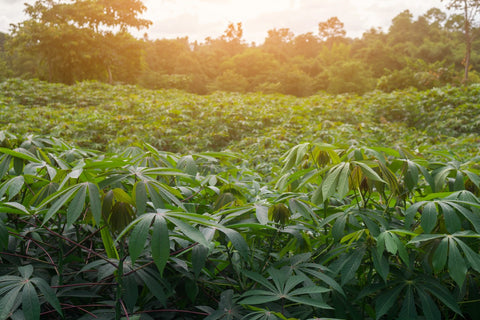
It is true that the root, raw and unprocessed, contains natural amounts of hydrocyanic acid - the same also applies to bitter almonds and spinach. But it is also true that cassava has served as a food source for indigenous cultures for many centuries. So this means that the processes to make the tuber edible and non-toxic have also existed and been tried and tested for many hundreds of years. In fact, making cassava edible isn't all that complicated. The harmful cyanides are removed by soaking, heating (i.e. boiling or baking) and fermentation.
At Ruut, the root is peeled, dried under heat and then finely ground. This gentle process not only destroys the hydrocyanic acid, it also preserves all of the healthy ingredients.
In addition to the harmlessness with regard to the hydrocyanic acid content, it is also important to us that our cassava products reach you at home free of additives and preservatives as well as free of heavy metals such as lead. That is why our batches are subject to strict controls.
Our cassava flour is therefore grown directly in Peru in the traditional way by smallholders without pesticides and artificial fertilizers and then processed. Ruut cassava flour is therefore guaranteed to be 100% cassava.
We are aware that there are big quality differences on the market for cassava flour to buy, but at Ruut we always guarantee you the best quality, because we analyze each batch in the laboratory before it is packed and ready for you to buy.
4. Ruut cassava flour is socially and environmentally sustainable
It is important to us that our cassava flour is produced fairly and sustainably. That's why we work exclusively with independent smallholders in Peru who can negotiate their own prices locally and grow in a traditional way without monocultures. The cassava plant itself is quite undemanding in cultivation and can compensate for dry and rainy periods very well. This property simplifies cultivation and makes it possible to grow without any fertilizer or pesticides.
